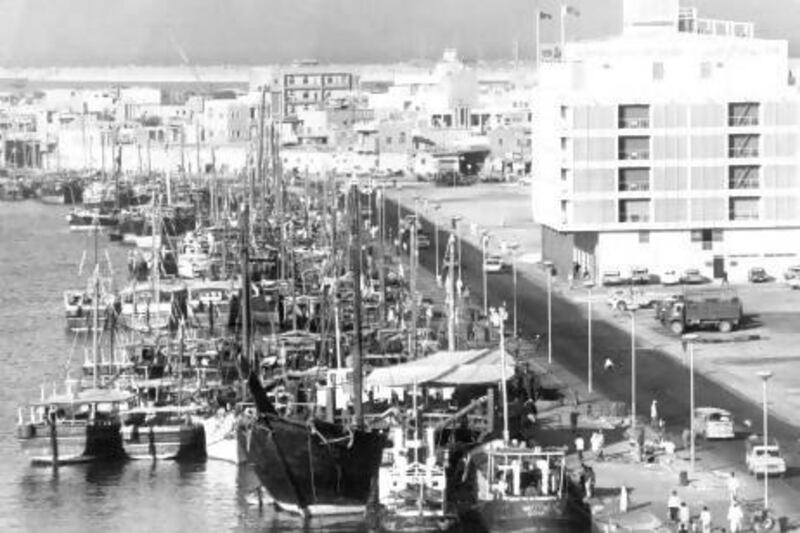DUBAI // The period from 1960 to 1971 was key in the development of Abu Dhabi, when the traditional way of life that had prevailed for centuries gave way to the modern world.
This transition, determined by a team at Harvard University in the United States, was revealed yesterday at a conference in Dubai.
The academics, as part of a major research project, set out to define the period when the past turned into the present in Arabian Gulf cities. They considered population and income growth, the establishment of modern state institutions and many other factors.
"In 1962 we had the first oil exports from Abu Dhabi," Dr Andreas Georgoulias of Harvard told the International Architectural Conservation Conference. "In the 1960s we had mass housing projects, major infrastructure, roads, telecommunications, ports and the modernisation of social infrastructure."
Dr Georgoulias was asked whether the personality of Sheikh Zayed - who became Ruler of Abu Dhabi in 1966 - was a significant factor.
"Absolutely," he said. "This was fundamental in the case of Muscat also with Sultan Qaboos."
The historical transition period occurred at different times in different cities. In Manama, Bahrain, for example, it began in 1935 and continued into the 1950s. In Muscat, Oman, old did not give way to new until the 1970s. In Dubai it happened between 1955 and the 1970s.
"Interestingly enough, the transition to what we might define as the modern period in Dubai happened before oil discovery because of the significant trade and infrastructure aspects that the leadership had envisioned for the city," Dr Georgoulias said.
"In the early 1950s we have electricity, the first airport, the complete modernisation of the education system. In 1956 we have the first concrete building and in 1960 the first master plan."
The turning point came in Kuwait City between 1945 and 1955, in Doha, Qatar, during the 1950s and in Dammam, Saudi Arabia, between 1945 and 1960.
The findings are intended to help conservation officials decide which buildings, monuments and other elements should be preserved.
"This could help with national policy and conservation regulations, especially when it comes to integrating the different policies of different cities in different nations," Dr Georgoulias said.
The study could help to establish the unique identity of the architecture and urbanisation of the Arabian Gulf region.
"From our research we found out that it is a unique historical example and it needs to be acknowledged and studied as such," Dr Georgoulias said.
"We decided to sample major cities by or close by the Gulf, that was our research intention. But this can be expanded, this methodology, and applied to more cities in other countries and the same countries."
He said the argument made in the larger study of which the transition project was part of was that the waters of the Arabian Gulf brought together people, architectural styles and technology.
Another speaker, Stefano De Caro, director general of the international conservation organisation ICCROM, said the region could learn from the way Renaissance palaces in Italy had been updated with lifts and central heating so they could be used as homes.
"There will be a moment when the Arab world will develop a way in which old houses and other old buildings will be used for living, not only for museums or markets," he said, and this would provide a new, inspiring way of life that combined the ancient and the modern.






